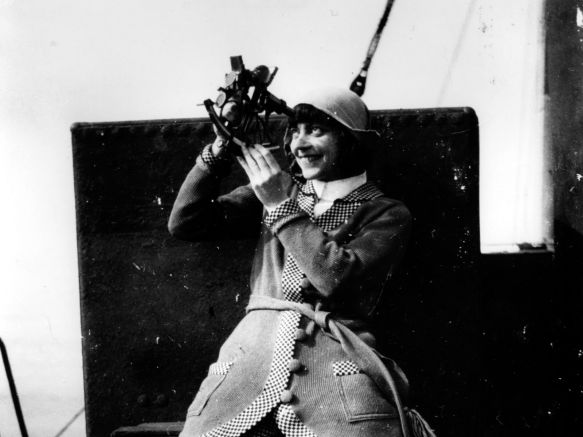
Asta Nielsen
Other names: Nielsen, Asta Sofie Amalie (birth name); Gad, Asta
actress, Producer, film producer
* in Kopenhagen
† in Kopenhagen
Called “the Eleonora Duse of Film”, beginning in 1910 Nielsen avanced to become a world star of the silent film era, thanks to her unique expressiveness and ability to transform. She originally worked with her first husband, the film director Urban Gad, and later with Ernst Lubitsch, Leopold Jessner, and G. W. Pabst. In 1937 Nielsen returned to Denmark after making more than 70 silent films and one sound film. Her last film, the autobiographical documentary ‘Asta Nielsen’, was made there in 1968. She directed it herself.
About the Estate
The estate can primarily be traced back to Nielsen’s third husband, the art dealer Christian Theede, as well as a friend of the family, Allan O. Hagedorff. Photos and written documents were added in spring 2021 through Nielsen’s biographer Renate Seydel. The Asta Nielsen Archive comprises more than 120 written documents (in German and Danish), including letters from artists of her times, for instance, Max Landa, Joachim Ringelnatz and Paul Wegener. Correspondence with the author Karl Kinndt from 1947 to 1952 offers insights into Asta Nielsen’s concerns and hardships in Copenhagen following the end of the war. These holdings also include her last passport and copies of her marriage licences with Urban Gad, her second husband Ferdinand (“Freddy”) Wingaardh and Christian Teede, as well as a copy of the certificate of divorce from Gad. A tour book from the years 1925 to 1929 is one of the few objects in the collection, which attests to Nielsen’s stage career, also in Germany.
More than 1500 photos in 15 albums provide insights into both her professional work and her private life. There is even an album of the carousel-shaped summer house she loved so much on Hiddensee. The photos taken there depict prominent artist guests ‒ Joachim Ringelnatz, Heinrich George, Paul Wegener ‒ in an exuberant atmosphere. Scrapbooks with newspaper clippings, correspondence and notes in Danish and German from the 1920s to the 1980s enhance the inventory.
Asta Nielsen dedicated herself to a new challenge after the Second World War. She designed fabric collages, for which she used some of the costumes from her films. Twenty-three of these attractive collages from the 1950s and 1970s are part of the Kinemathek’s Graphic Archive collection. (Text: Diana Kluge)
Content
Script, Print, Photography, Small object, Literature, Sheet of music, Paper documents, Sound recording
Dimension
approx. 0.9 Shelf meter
Inv. No.
198046
Credit LineAsta-Nielsen-Archiv, Deutsche Kinemathek